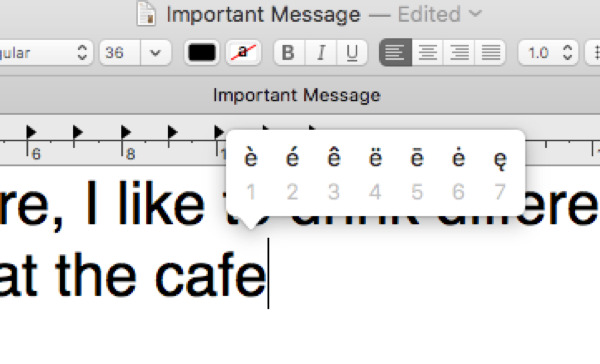

- #Spanish letters with accents in word document android#
- #Spanish letters with accents in word document code#
- #Spanish letters with accents in word document plus#
What are the keyboard shortcuts for Spanish accent marks?
#Spanish letters with accents in word document plus#
For “é,” press Alt plus 130 or Alt plus 0233. For “á,” press Alt plus 160 or Alt plus 0225. There are also codes you can enter that yield the letters with the accent together, which require activating the number pad and entering the numbers on it. Press Ctrl plus ‘ (a single quote) plus “e” to insert “é,” for example. How do you type Spanish accents on a Windows laptop? Slide your finger up to the accented letter and release it to place it in a document or text message.

You’ll see a pop-up of the available diacritical marks for that letter.
#Spanish letters with accents in word document android#
Keyboard shortcuts to add language accent marks in Word To insert thisĪdding Accents on Mobile Devices If you are typing on an iOS or Android mobile device, hold your finger on the letter that you want to accent. What is the keyboard shortcut for accent marks? How do you type Spanish accents on a keyboard?įor accents, all you need to do is to press the Option key + e, and the letter you need at the same time and then release the keys.

#Spanish letters with accents in word document code#
The operating system of this model, the "MS-DOS" also used this extended ASCII code.Īlmost all computer systems today use the ASCII code to represent characters and texts.ĪSCII code 03 = ETX ( End of Text, hearts card suit )ĪSCII code 04 = EOT ( End of Transmission, diamonds card suit )ĪSCII code 05 = ENQ ( Enquiry, clubs card suit )ĪSCII code 06 = ACK ( Acknowledgement, spade card suit )ĪSCII code 11 = VT ( Vertical Tab, male symbol, symbol for Mars )ĪSCII code 12 = FF ( Form feed, female symbol, symbol for Venus )ĪSCII code 21 = NAK ( NAK Negative-acknowledge )ĪSCII code 23 = ETB ( End of trans. IBM includes support for this code page in the hardware of its model 5150, known as "IBM-PC", considered the first personal computer. In this way was added the ASCII characters ranging from 128 to 255. Also 128 characters were added, with new symbols, signs, graphics and latin letters, all punctuation signs and characters needed to write texts in other languages, such as Spanish. In 1981, IBM developed an extension of 8-bit ASCII code, called "code page 437", in this version were replaced some obsolete control characters for graphic characters. So with this set of only 128 characters was published in 1967 as standard, containing all you need to write in English language. This code arises from reorder and expand the set of symbols and characters already used in telegraphy at that time by the Bell company.Īt first only included capital letters and numbers, but in 1967 was added the lowercase letters and some control characters, forming what is known as US-ASCII, ie the characters 0 through 127. The American Standard Code for Information Interchange, or ASCII code, was created in 1963 by the "American Standards Association" Committee or "ASA", the agency changed its name in 1969 by "American National Standards Institute" or "ANSI" as it is known since.


 0 kommentar(er)
0 kommentar(er)
